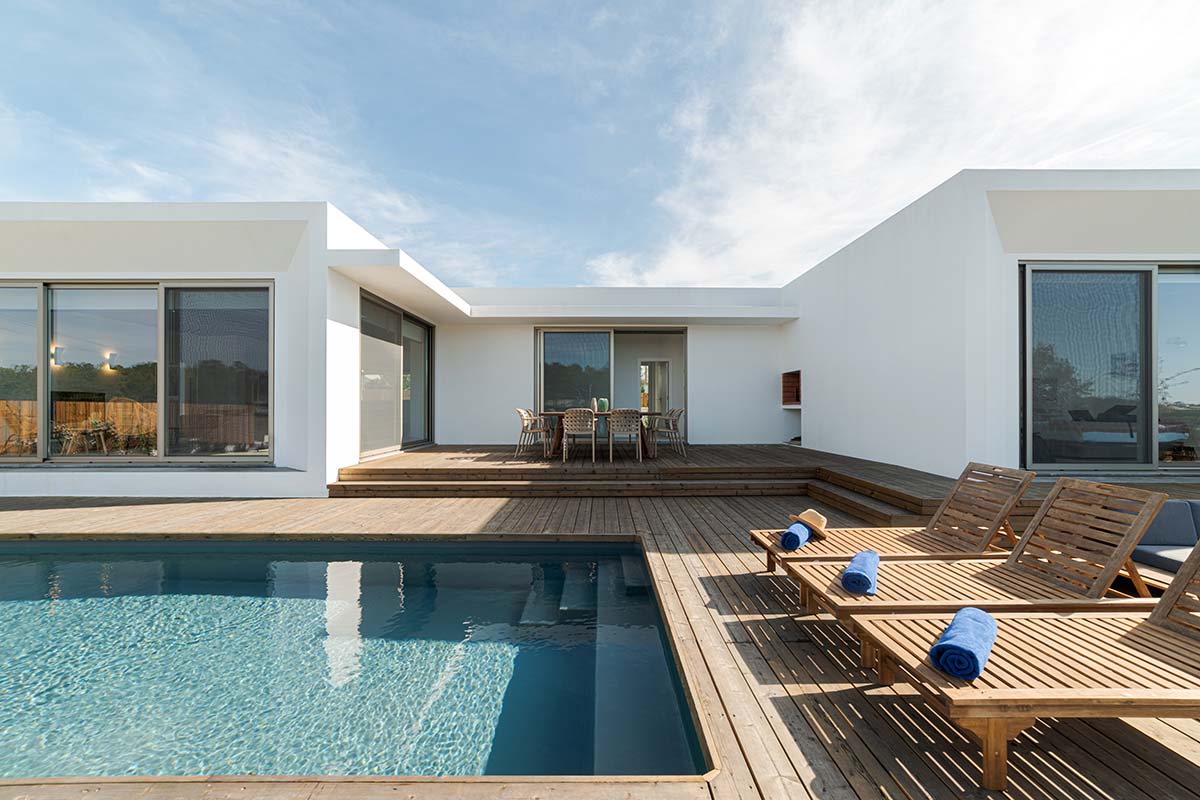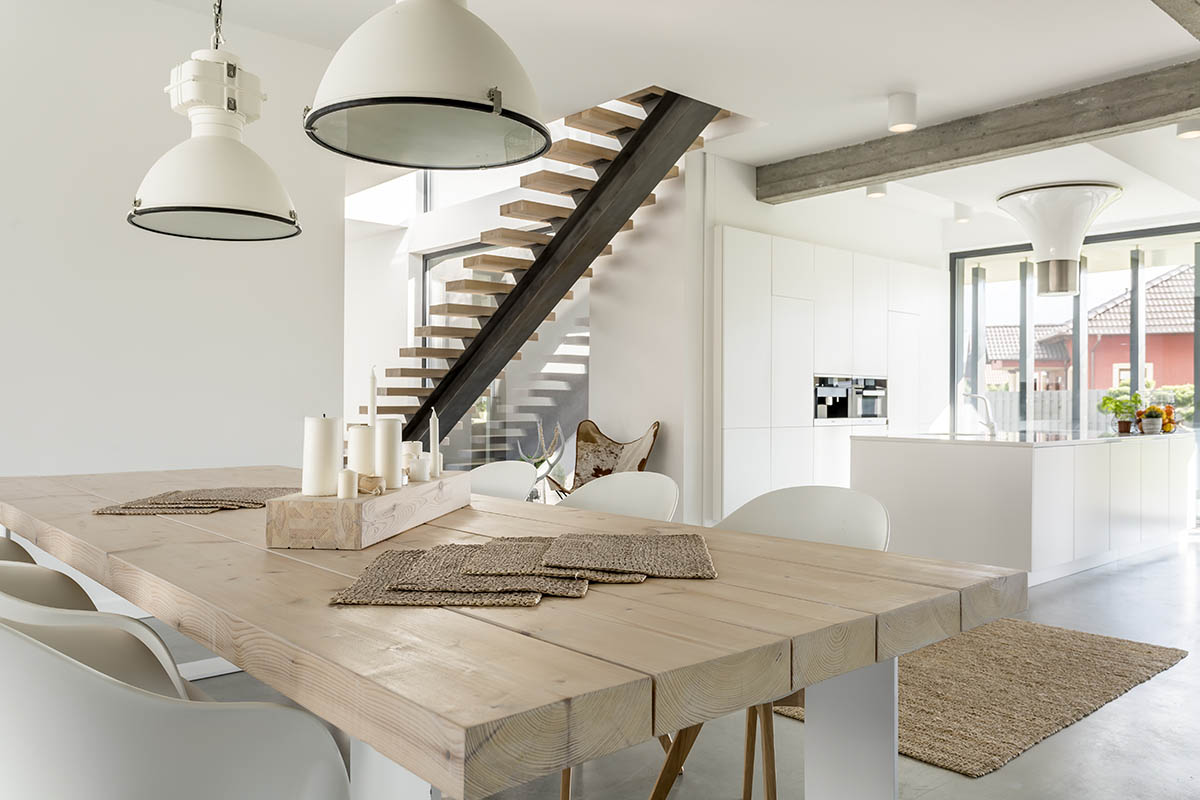
It’s expected that the Thai economy will grow by 3.7% when COVID-19 measures end in 2022. The full economic recovery of the kingdom will probably take 2-3 years. Real estate prices continue to rise because of new projects being launched. The lowest cost of housing in Thailand was passed in 2021 and the number of new projects was also the lowest in the last 6 years.
Real estate is usually made up of 3 main categories: residential, commercial and industrial. According to the global real estate market, residential properties make up about two-thirds of Thailand's real estate market. Housing units are marketed mainly to Thai clients. This is because Thai law allows foreigners to buy apartments in condominiums only if they own no more than 49% of the total area of the building. And foreign citizens are not allowed to own land in Thailand. But, there are still many foreigners who want to buy properties in Thailand.
The mismatch between the price expectations of buyers and sellers is one of the main reasons why only a few investment deals have been made over the past 2 years. Forecasts say that the gap in price expectations will narrow in 2022 and the potential for investments will grow.
Foreign buyers will pay more attention to Thai real estate. Real estate developers will be looking for investors to help finance new projects. Also, Thai banks are cautious to give credit this year. Some experts believe that Thailand’s real estate market, office space and industrial and logistics facilities will begin to recover in 2022.
The main vectors of the real estate market in 2022
Although we can predict the return of foreign investors in Thailand in 2022, the situation remains unstable because of possible new strains of coronavirus and geopolitical changes. Citizens of China, Singapore, Russia, the United States and European countries are some of the largest foreign investors in Thai real estate. But local developers are counting on Thai buyers even more. Today, some projects are under construction with affordable apartments starting at 1,000,000 THB. These target young Thais of Generation Y or Millennials and Generation Z. Low-rises are often townhouses and 2-family houses at no more than 5,000,000 THB. freestanding houses aim at groups with high purchasing power as their prices start at 10,000,000 THB or more. Different promotions and discounts are expected to motivate people to buy real estate in the country.

Demand should grow as the economic situation improves. 332,192 real estate deals are predicted for 2022 in Thailand. This is 25.1% more than in 2021. The demand for low-rises will increase by about 24.6% and by 26.1% for units in high-rise condos. The recovery in high-rise condo sales and development is slower than for low-rise housing types. This year, as in 2021, more low-rise units will be completed than high-rise ones because of the higher demand. The demand is because of people’s lifestyle changes after the pandemic. The construction of condominiums will resume gradually.
Developers have condominium projects that include various amenities to meet new needs like work from home spaces, health and wellness (fitness rooms, spa areas, saunas, swimming pools), and a general improvement in the quality of life (lounge areas). High-quality service and security systems are also designed in advance.
To increase purchasing power, the Ministry of the Interior in Thailand has reduced the registration fee for property rights and legal acts on housing units (no more than 3,000,000 THB) from 2 to 0.01%. The state supports the subsidized mortgage program (this is valid until December 31, 2022).
Cost of new housing in Bangkok (January - September 2021)
| Million THB | House with land | 2-family house | Townhouses | Shop | Condo | Land | Total | % |
|---|---|---|---|---|---|---|---|---|
| 0,5‒1 | 0 | 0 | 0 | 0 | 1203 | 0 | 1203 | 1 |
| 1-2 | 0 | 0 | 4252 | 0 | 5107 | 0 | 9359 | 5 |
| 2-3 | 616 | 834 | 18 227 | 0 | 9905 | 0 | 29 582 | 16 |
| 3‒5 | 5674 | 7344 | 15 357 | 465 | 4199 | 0 | 33 039 | 18 |
| 5‒10 | 14 070 | 11 358 | 2461 | 903 | 13 372 | 98 | 42 261 | 16 |
| 10‒20 | 11 403 | 2481 | 2023 | 851 | 8473 | 239 | 25 470 | 5 |
| от 20 | 17 721 | 142 | 0 | 0 | 20 953 | 0 | 38 816 | 2 |
Previous periods show us that the largest share of real estate in Thailand is in the price range from 2 to 3,000,000 THB (33% of all properties). This is followed by homes worth 3 to 5,000,000 THB (24%). Wealthy people buy their own houses with a plot of land. Most of these houses cost from 20,000,000 THB. A townhouse’s price is anywhere from 2 to 5,000,000 THB. Apartments in condominiums cost between 5 to 10,000,000 THB.
Unique opportunity in Bangkok
The opening of new high-speed train lines in 2022 will affect the real estate market in Bangkok. These are the yellow line Ladprao - Samrong and the pink line Khe Rai - Minburi. New residential complexes are already under construction near the subway’s construction site. The price of local real estate will increase with the opening of these stations. Other parts of Bangkok and neighboring provinces’ land and property prices will rise faster than the national average.
Top 10 places in Bangkok with the fastest rising land price:
- Former Panaphan School (Ladprao) 16.7% increase;
- Satriwitthaya 2 (Ladprao 71) - 16.7%;
- Vibhavadi Chatuchak - 16.0%;
- Ramkhamhaeng Saphan Sung - 15.7%;
- Chokchai - 15.4%;
- Kaset Nawamin - 15.0%;
- Chaengwattana - 14.8%;
- Phaholyothin Soi Senanikom - 14.6%;
- Phahonyothin 33 km - 14.3%;
- Ramaintra 11.4 km - 14.3%.
The price of real estate near the railway tracks also grows in provinces close to Bangkok. In the province of Pathum Thani, these are areas along the Hu Hot - Outer Ring Road electric train line, namely the Klong Khong neighborhood and the Khlong Luang district. The real estate prices have already increased by 50% there compared to 2019. In the Klong Ha neighborhood of Klong Luang, prices increased by 19%. Price increases also depend on the type of housing units. For example, separate single-family homes rise in price faster than all other segments in 2021, especially in Na Mai and Lat Lum Kaew.
In Nonthaburi, high-potential property is located along the Bang Yai - Bang Sia Purple Line of the ground metro. These are the Bang Rak Noi and Muang Nonthaburi districts where prices increased by 17%, as well as the Bang Yai district where the cost increased by 9%.
In Samut Prakan, housing prices increased by 12% along the Samrong-Kheha Skytrain Green Line in Tai Ban Mai, Muang Samut Prakan, Tefarak districts. The yellow line of the Ladprao-Samrong metro will be opened in Tefarak in 2022. At the end of 2021, the highest price index is 7% on average for townhouses. There’s noticeable price growth for townhouses in Pak Nam and Muang Samut Prakan districts (+36%).

6 main provinces
Housing construction is concentrated mainly in 6 provinces: Chiang Mai, Chonburi, Rayong, Nakhon Ratchasima, Khon Kaen and Phuket. This is shown in 2019’s building permit applications. Projects in these provinces make up 23% of the total building permits nationwide (24% low-rise and 13% high-rise) and 39% of the total building permits in the provinces (37% low-rise and 73% high-rise).
Condominiums are popular in main tourist provinces such as Chonburi, Chiang Mai and Phuket. The number of tourists in these 3 provinces was 31% of the total number of tourists in the country in 2019. The income from their stay was 40% of all income generated in the tourism sector. Apartments in high-rises are popular among foreigners. Meanwhile, demand for properties in high-rises has grown significantly for Thai clients after the big flood at the end of 2011. Competitive housing complexes have filled up the market and land prices continue to rise in these hot spots. That’s why major and local real estate developers construct a large number of condominiums in provinces, especially in Chiang Mai, Chonburi, Rayong and Khon Kaen. The growing interest in these provinces increased the average land price by 8% in 2020 compared to 2019.
The real estate market still isn’t developed enough in these 6 provinces, so there’s great room for growth in the future. There are different groups of customers in each, for example, the main group in Chiang Mai is Thais. The Chinese prefer to invest in local condos.
Chinese tourists often choose Phuket as potential buyers of condominiums. They usually buy an entire floor. There are also many Russian and Singaporean investors in Phuket.
In Chonburi, the main clients are Chinese and European investors. Both condominiums and villas are popular among them. In Rayong, the main buyers are Thais. Most of them work in industrial areas. People with high incomes buy private houses. Chonburi and Rayong have benefited from projects that the Thai government plans to develop in the transport field, like high-speed trains that will connect 3 airports: Don Mueang, Suwannaphum and U-Tapao.
In Nakhon Ratchasima, most real estate buyers are local residents who are interested in properties in the central part of the province. Here, condominiums are mainly bought for living, studying, working or rental income.
In Khon Kaen, the main clients are local residents with stable incomes, most of them are government employees or individual entrepreneurs.
In 2020, sales in these provinces dropped by 10.8% compared to the previous year.15,539 properties were sold. This was because of an increase in household debt and stricter mortgage conditions. But, the demand for low-rise housing units continues to grow in Chonburi and Rayong. Condominium sales decreased by 29.1%, especially in Chonburi and Phuket (-31.5% and -71.7% respectively).
Some expected negative factors that affect sales in the real estate market in 2021-2023 are:
- household debts, which increase and directly affect people’s purchasing power;
- strict credit rules;
- oversupply in the market.
According to official forecasts, Thailand's economy will grow by 3-4% on average per year after decreasing by 6.1% in 2020. Investment in infrastructure will grow, especially in the Eastern Economic Corridor region. This includes Chonburi, Rayong and Chachoengsao province and aims to develop the region as a leading economic zone in South Asia. Because of this, housing demand in Chonburi and Rayong will recover faster than in other provinces. The number of foreign tourists will also grow after restrictions are lifted and vaccinations are introduced around the world, including Thailand. Forecasts say that the number of tourists will return to 2019 levels (40,000,000 people) by 2024.



